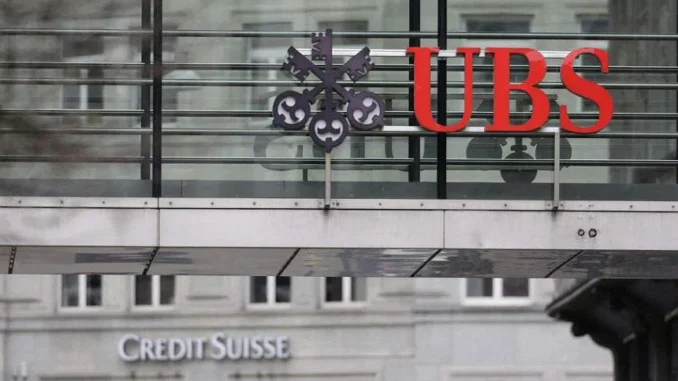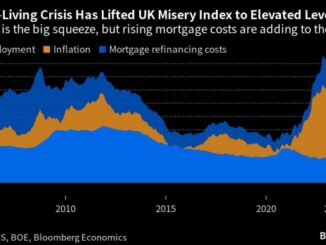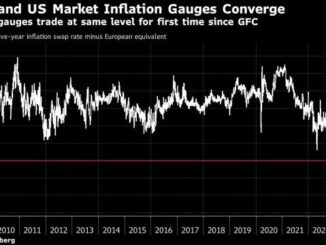
The collapse of Silicon Valley Bank and two other lenders in the US, and the shotgun wedding between Credit Suisse and UBS amid monetary tightening around the world, have led to a crisis of confidence for financial institutions.
Unlike the 2008 global financial crisis — that was a result of a housing bubble in the US fuelled by predatory private mortgage lending and unregulated markets, which led to the collapse of banks and whose reverberations were felt worldwide — the crisis in the world of finance today is not about a contraction of liquidity.
Regulations put in place since the 2008 crisis have produced stronger financial institutions, and regulators in the US and Switzerland have been quick to act to contain the outbreak and possible contagion.
In the US, the Treasury Department, the Federal Reserve and the Federal Deposit Insurance Corporation (FDIC) moved in and guaranteed a depositor bailout of SVB and Signature Bank, after the banking crisis had already wiped off more than $465 billion from markets.
Then US banks — comprising JP Morgan Chase, Bank of America, Citigroup, Wells Fargo, BNY Mellon, PNC Bank, State Street, Truist and US Bank — extended a $30 billion lifeline to First Republic Bank to shore up confidence in the lender.
In Switzerland, regulators jumped in to ring-fence Credit Suisse, the country’s second largest lender, by ironing out a deal and paving the way for it be absorbed by UBS, its biggest bank.
The Swiss National Bank is lending up to 100 billion Swiss francs ($108 billion) to help it takeover Credit Suisse while Swiss regulator Finma erased $17 billion worth of Credit Suisse’s bonds and scrapped the need for UBS shareholders to vote on the agreement.
Credit Suisse had inherent weaknesses and lost its lustre after the 2008 financial crisis.
It had internal compliance shortfalls that exposed fraud, illegal acts that helped some clients in the US to evade taxes, a spying scandal that led to leadership changes at the top, as well as exposure to New York-based investment firm Archegos Capital, which cost it $5.5 billion, and the accounting scandal involving Chinese Luckin Coffee company that it helped to go public.
So, while the 166-year old bank has been wound down, it is not directly linked to the crisis in the US.
“This is a historic day in Switzerland but, frankly, a day we hoped would not come,” UBS chairman Colm Kelleher told analysts on Sunday.
Under the terms of the acquisition, one share of UBS will be issued to Credit Suisse shareholders for every 22.48 Credit Suisse shares they own.
UBS estimates that the combined invested assets will total $5 trillion, with the merged lender being double the size of Switzerland’s economy.
The $3.2 billion purchase of Credit Suisse by UBS was “very much anticipated by traders and investors” when the rout began in the Credit Suisse stock last week, after the lender’s biggest shareholder ruled out the possibility of boosting its stake, said Naeem Aslam, chief investment officer of Zaye Capital Markets.
“The lawmakers are trying their best at this stage to put off fires which are in their backyards, and the purpose is to quell any potential crisis that is threatening their banking sector.”
As a result of the lessons from the 2008 financial crisis and the quick pivot of regulators, the situation is not repeating itself and is not about systemic risk.
“There is no reason for the Credit Suisse crisis to extend, as what triggered the last quake for Credit Suisse was a confidence crisis, which doesn’t concern UBS — a bank outside of the turmoil, with, in addition, ample liquidity and guarantee from the SNB and the government,” said Ipek Ozkardeskaya, a senior analyst at Swissquote Bank.
On Monday, UBS shares fell as much as 16 per cent at the start of trading before paring declines to 7 per cent at 11.23am in Zurich
In Asia, the Hang Seng, Nikkei 225 and Kospi fell about 2.65 per cent, 1.42 per cent and 0.69 per cent, respectively, while the Shanghai Composite was up 0.48 per cent. Both the safe-haven Japanese yen and gold rebounded to levels near their Friday close after early session declines.
Still, uncertainty lingers and there are questions about the impact of the banking crisis on the health of the global economy.
For the US, the reverberations of the crisis across smaller banks in the world’s largest economy, coupled with the tightening of lending policies as the Fed continues to raise interest rates, could reduce economic growth this year but not lead to a 2008 crisis, said Goldman Sachs.
While SVB is the biggest bank to fail since the 2008 financial crisis and has triggered broader concerns about the health of the US banking sector, “a repeat of the turmoil [of] 15 years ago seems unlikely”, Goldman Sachs said.
Even though the collapse is significant, it is “a very idiosyncratic situation”, said Richard Ramsden from the investment bank’s research team.
“You had a bank that had taken a lot of interest rate or duration risk on their portfolio — coupled with the fact that they had a very concentrated deposit base that was very exposed, obviously, to the venture capital community and venture capital portfolio companies that were experiencing these very significant outflows,” Mr Ramsden said in the latest episode of the podcast called Exchanges at Goldman Sachs.
Moreover, Lotfi Karoui, chief credit strategist of Goldman Sachs, said “the quality of the assets … the quality of the collateral, is orders of magnitude better today than it was in 2008”.
“There’s also greater transparency over its valuations today, relative to the run-up to the global financial crisis.”
While the dynamics are different today than in 2008, the banking turbulence is expected to have near and long-term effects, the investment bank said.
“There is going to be some migration of deposits from the smallest institutions to the largest institutions,” Mr Ramsden said.
“But I also think there’s going to be some migration of deposits outside of the banking system, as well. And I think those two things are happening concurrently.
“We have seen a tightening of lending standards in the banking system, and my suspicion is that they will tighten further from here and potentially could tighten quite sharply, at least in the near term.
“On balance, my guess is that banks will take a view that this could result in either a near-term recession or a deeper recession than you would have had without this event.”
Last week, Moody’s Investors Services lowered its outlook on the US banking system to negative, from stable, due to the Fed’s rapid monetary tightening and weak risk management that amplifies the underlying asset-liability threats banks face.
Moody’s also forecasts the US economy would slide into a mild recession in the latter part of 2023.
Economists at Goldman Sachs have also adjusted their probability for a US recession in the next 12 months to 35 per cent, from 25 per cent.
“Our economists expect lending standards will tighten more, to a degree that’s greater than during the dot-com crisis but less than during the financial crisis or [at] the height of the pandemic,” Goldman Sachs said.
The investment bank expects a pause in interest rate increases by the Fed at its next meeting on Tuesday and Wednesday.
Source: www.thenationalnews.com



